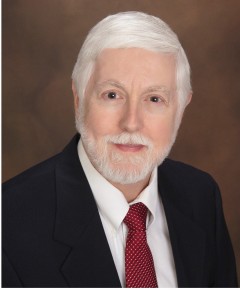Robin Williams’ gift to the public was being the world’s wittiest improvisational comic and a heartfelt actor. He could ad-lib jokes in a spontaneous stream that kept us in stitches and in awe, and move us emotionally with gentle humor on screen. He had been reported to have bipolar disorder. He had referred to his own inner demons, depression and drug abuse. His struggles and death are illuminating in several ways.
Bipolar disorder is characterized by spontaneous, major mood shifts from too high (mania) to too low (depression). When manic one enjoys it, speaks and lives fast, sleeps less, but may use poor judgment and take more risks. When depressed, one is in despair and may be immobilized with no capacity to experience emotions other than hopelessness. There is a greater liability to drug abuse and dependence, particularly of alcohol, and among drug addicts there are more of these mood disorders than in general. Mr. Williams evidently experienced all that.
One of his self-descriptions became the “sad clown” (for those of a certain age, think Emmett Kelly). That is very apt, depicting a performer who brings joy and release to others yet can’t escape his own misery. Those two states can coexist in a sufferer sometimes, as a bipolar “mixed state”. This usually means the person shows manic behaviors while experiencing depression within. One wonders how often this was Mr. Williams’ experience.
There were likely personal stresses triggering his end, perhaps overreacting to early Parkinson’s disease. However, people with serious mood disorders like bipolar, especially with drug dependence, alcohol abuse or both, are all at increased risk during their lifetimes for suicide. Nearly all who kill themselves do so in the grip of acute psychiatric states that would have been treatable.
From his death, there are other lessons to be learned. Talent and success, fame and fortune are no defense against psychiatric illness or tragic responses to it. They can even impede good treatment, because of the image celebrities uphold of leading idealized lives. Public expectations don’t accommodate private anguish. Mr. Williams reportedly was dealing with severe depression recently, as at other times through his life. Evidently self-inflicted cuts express how severe his emotional pain must have been. He then hanged himself with a belt in his own closet. It happened at night, after a normal goodbye to his wife, when no one would be expected for hours. There was serious intent to die, even if it was unexpected.
It’s good if guns were not accessible to Mr. Williams as he was “battling severe depression”. But though guns are lethal tools for suicide, there are many other ways to accomplish it. Any of us, wherever we are and whatever we are doing, could easily kill ourselves in a variety of ways. Well people don’t because it just doesn’t occur to us. When someone truly intends to die, they can and simply do.
I daresay that mainstream media would have blamed the gun too if Mr. Williams had used one, with less attention to the more significant, complex realities of depression, suicide, and his life and struggles. But his belt and the closet are being ignored! Let’s not blame the method, so let’s not ban belts, closets, razors – or guns. Let’s intervene to keep people safe when there is cause for concern, to give them the one more chance that could be their turning point.

— DRGO editor Robert B. Young, MD is a psychiatrist practicing in Pittsford, NY, an associate clinical professor at the University of Rochester School of Medicine, and a Distinguished Life Fellow of the American Psychiatric Association.
